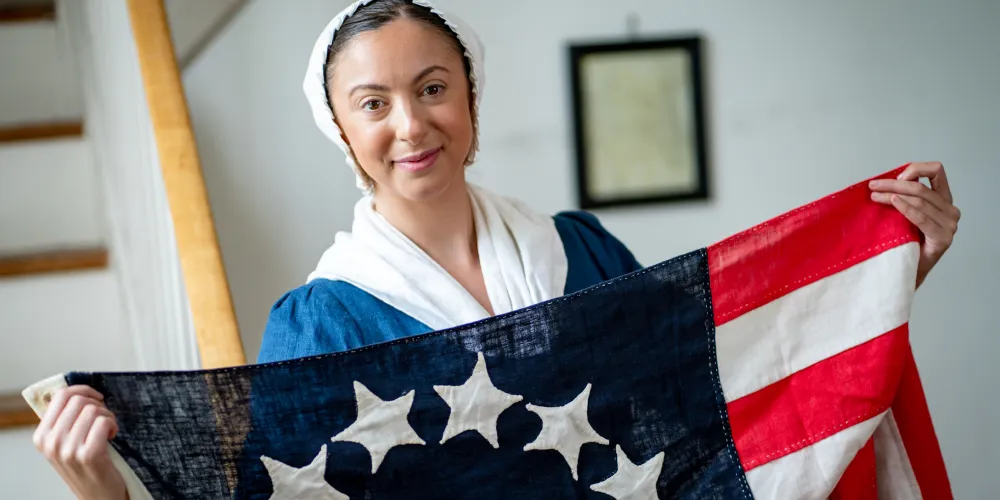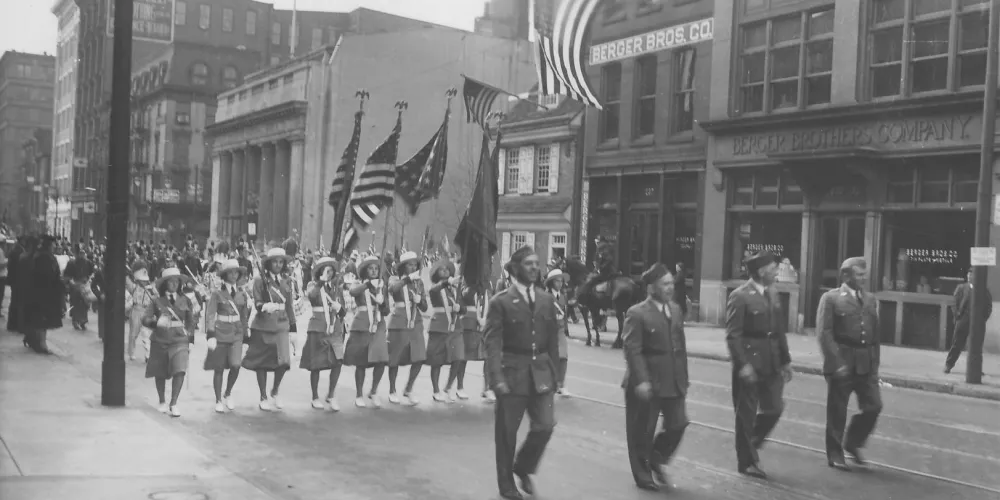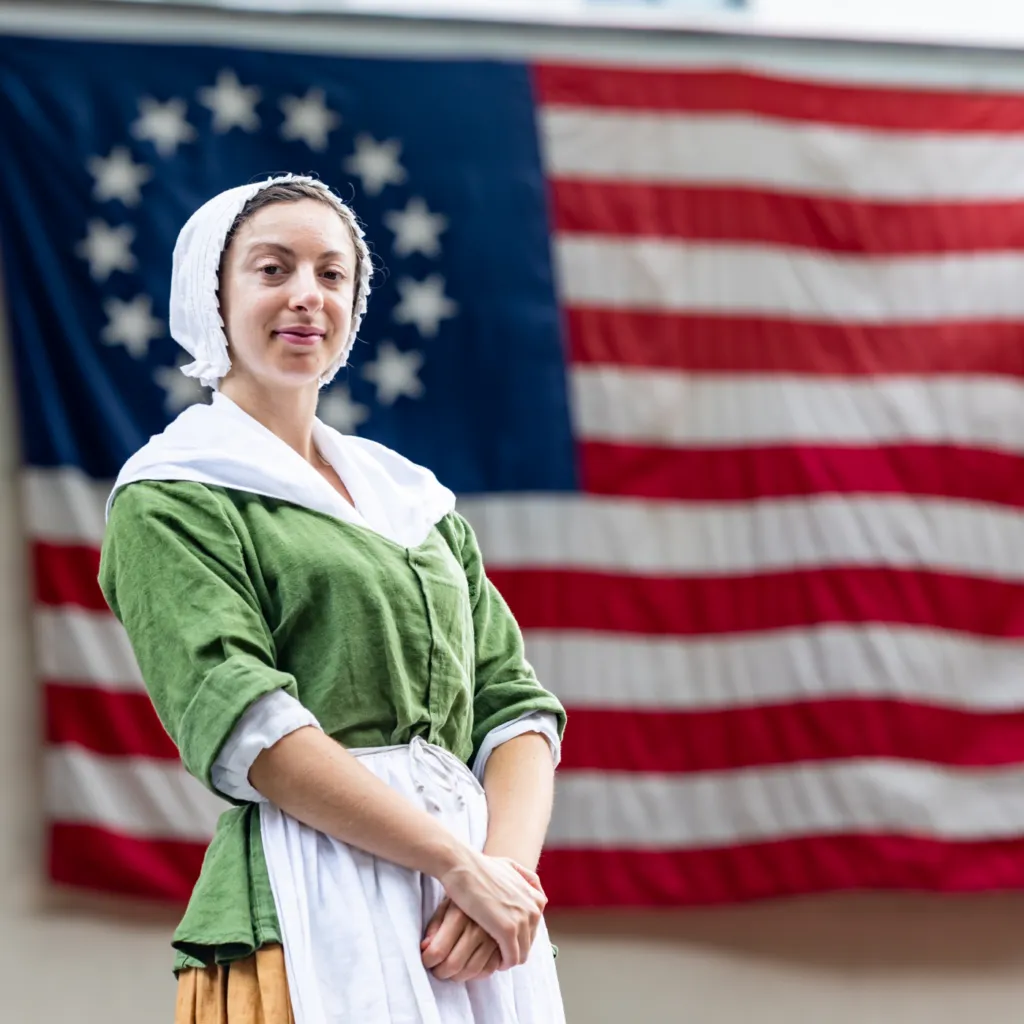
The history of the Betsy Ross House is as full of twists and turns as the stairs in her home. The front portion of the bandbox or “trinity” style house was built in 1740 with the rear section being added on about 10-20 years later. In the 18th century the house was occupied by a shoemaker. And a shopkeeper. And an apothecary. And yes, by an upholsterer named Betsy who rented two tiny rooms from the Widow Hannah Lithgow, probably from 1776 to 1779.
By the 19th century, a German immigrant family by the name of Mund moved into the building where they ran a variety of businesses including a tailor’s shop, a cigar store and a tavern. After learning of the story of Betsy’s role in making the first flag, the Munds took advantage of the house’s history and posted a sign on the outside which read: “First Flag of the US Made in this House.” An 1876 advertisement for the Munds’ tavern read: “Original Flag House, Lager, Wine and Liquors. This is the house where the first United States flag was made by Mrs. John Ross.”

1876 Munds’ Tavern advertisement
By the late 19th century though, many Colonial-era buildings were being torn down and a group of citizens realized the house was in danger and formed the American Flag House and Betsy Ross Memorial Association to raise funds to buy the house from the Munds.
And that’s where Charles Weisgerber, the hero of the Betsy Ross House, stepped in.
Weisgerber was one of the founding members of the Memorial Association and the artist who painted Birth of Our Nation’s Flag, a 9′ x 12′ painting that depicts Betsy Ross presenting the first American flag to George Washington, Robert Morris, and George Ross. (You can see a large replica of the painting in the orientation gallery). Led by Weisgerber, the Association sold lifetime memberships to their organization for a mere 10 cents in return for which they received a membership certificate and a request to form their own “clubs.” Those who did earned a ten-color chromolithograph of the Weisgerber painting, suitable for framing, in addition to certificates for each club member.
In 1898, Weisgerber actually moved his wife and daughter Augusta into the upstairs floors of the house. Eventually Weisgerber’s wife gave birth to a son whom Weisgerber named Vexildomus, which is Latin for flag house.

Charles and Vexildomus “Vexil” Weisgerber
The family opened two rooms on the first floor to the public where they could see the back room where the meeting between Betsy and the Flag Committee was said to have occurred and shop for souvenirs in the front room. And to protect the House from fire and other dangers, in 1929 the Memorial Association purchased two adjacent lots which later became the courtyard you see today.
Thanks to the vision and preservation efforts of Charles Weisgerber, the Betsy Ross House still stands as the nation’s only interpretation of an 18th century upholstery shop and allows hundreds of thousands of visitors each year the opportunity to learn about the life of Betsy Ross, a working class, 18th century tradeswoman and American legend.
Related Stories




